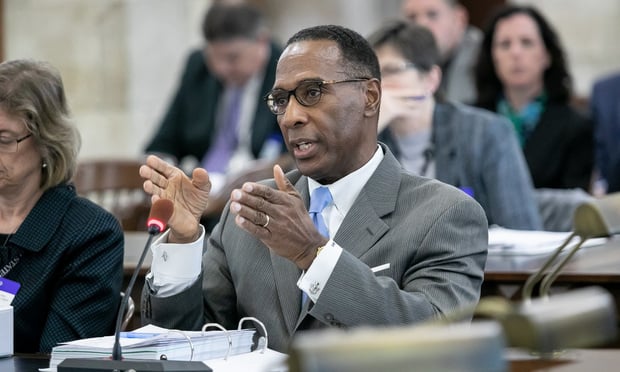Lawmakers pledged their ongoing support for, and Judge Glenn Grant pointed up the various successes of, New Jersey’s revamped bail system as he appeared before the Senate Budget and Appropriations Committee Tuesday, though the judge acknowledged the reform remains “a work in progress.”
Grant, acting administrative director of the New Jersey courts, said Tuesday that violent crime had decreased statewide per State Police data, and the jail population had decreased 20 percent, since implementation of a risk-based rather than cash-based bail system provided for in the state Criminal Justice Reform Act.
This content has been archived. It is available through our partners, LexisNexis® and Bloomberg Law.
To view this content, please continue to their sites.
Not a Lexis Subscriber?
Subscribe Now
Not a Bloomberg Law Subscriber?
Subscribe Now
LexisNexis® and Bloomberg Law are third party online distributors of the broad collection of current and archived versions of ALM's legal news publications. LexisNexis® and Bloomberg Law customers are able to access and use ALM's content, including content from the National Law Journal, The American Lawyer, Legaltech News, The New York Law Journal, and Corporate Counsel, as well as other sources of legal information.
For questions call 1-877-256-2472 or contact us at [email protected]


 Glenn A. Grant, J.A.D., acting administrative director of the New Jersey Courts.
Glenn A. Grant, J.A.D., acting administrative director of the New Jersey Courts.





